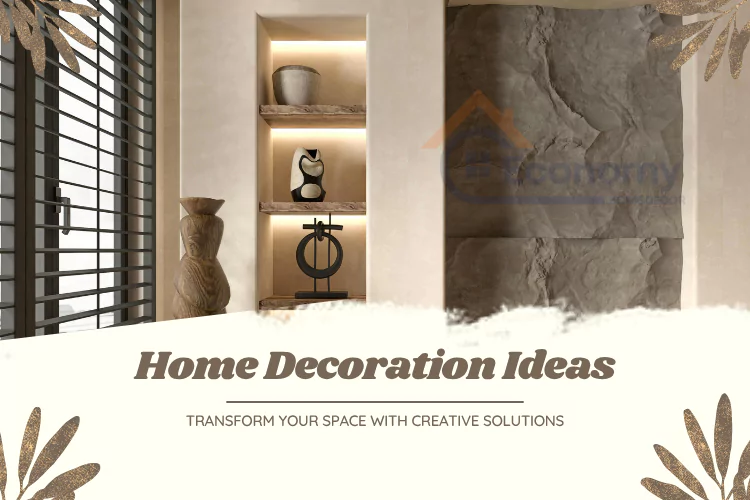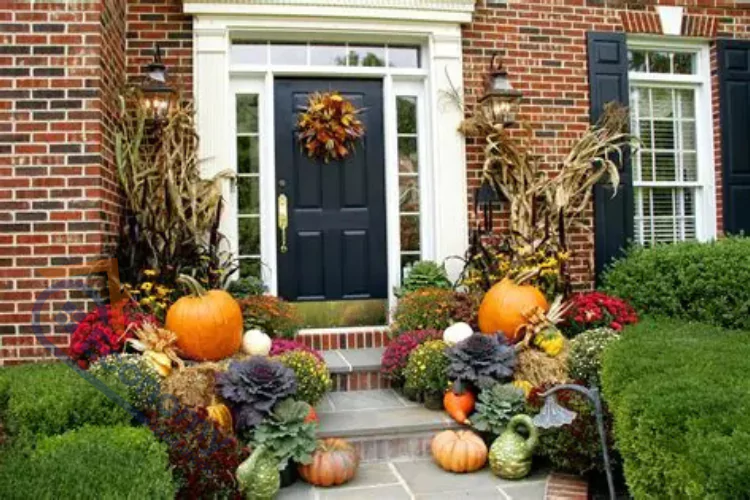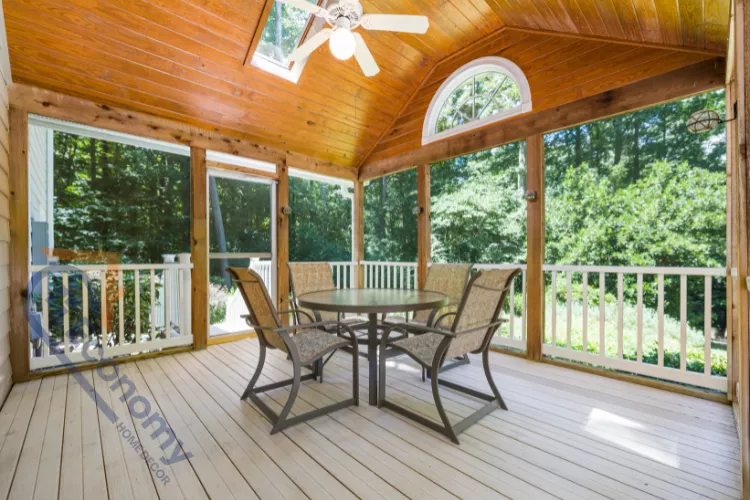Transforming your living space doesn’t have to break the bank or require professional expertise. Learning how to make home decoration ideas work for your unique space is an exciting journey that combines creativity, practicality, and personal style. Whether moving into a new home, renovating your current space, or simply looking to refresh your surroundings, this comprehensive guide will help you develop and implement stunning decoration ideas that reflect your personality while maximizing your budget.
The art of home decoration has evolved significantly over the years, moving away from rigid rules toward more personalized, flexible approaches. Today’s homeowners are embracing the concept of creating spaces that not only look beautiful but also function efficiently for their lifestyle needs. Understanding how to make home decoration ideas that work involves considering factors like natural light, room proportions, traffic flow, and existing architectural elements while incorporating your personal taste and functional requirements.
Understanding Your Space and Style Preferences
Before diving into specific decoration techniques, it’s crucial to assess your space thoroughly and identify your style preferences. This foundational step will guide all your future decisions and ensure that your decoration efforts create a cohesive, harmonious environment.
Start by examining each room’s architectural features, including ceiling height, window placement, natural light sources, and existing fixtures. Take note of the room’s dimensions and any structural elements that cannot be changed, such as built-in cabinets, fireplaces, or unusual wall angles. Understanding these fixed elements will help you work with them rather than against them when developing your decoration strategy.
Consider your lifestyle needs and how you use each space. A family room that doubles as a homework station will require different decoration considerations than a formal living room used primarily for entertaining. Think about traffic patterns, storage requirements, and the activities that take place in each area. This practical assessment will influence your furniture choices, color schemes, and overall layout decisions.
Your personal style preferences play a significant role in determining how to make home decoration ideas that truly reflect who you are. Browse through magazines, websites, and social media platforms to identify elements that consistently appeal to you. Create a mood board or collection of images that represent your ideal aesthetic, paying attention to color palettes, textures, furniture styles, and decorative elements that appear repeatedly in your selections.
Budget-Friendly Decoration Strategies
Creating beautiful home decorations doesn’t require unlimited funds. With careful planning and creative thinking, you can achieve stunning results while staying within your budget constraints. The key is to prioritize your spending on items that will have the greatest visual impact while finding cost-effective solutions for secondary elements.
Start by establishing a realistic budget for your decoration project, breaking it down by room or category. Allocate larger portions of your budget to key pieces like furniture, lighting, and window treatments, while reserving smaller amounts for accessories and decorative accents. Remember that decoration is often a gradual process, and you don’t need to complete everything at once.
Consider the 80/20 rule when making decoration decisions: invest 80% of your budget in foundational elements that will last for years, such as quality furniture pieces, neutral paint colors, and classic window treatments. Use the remaining 20% for trendy accessories, colorful accents, and seasonal decorations that can be easily changed as your tastes evolve.
Shop strategically by timing your purchases around sales events, exploring thrift stores and consignment shops for unique pieces, and considering DIY projects for custom elements. Many high-end looks can be achieved through careful shopping and creative problem-solving. For example, painting existing furniture can give it a completely new appearance, while rearranging pieces you already own can create fresh layouts without any additional cost.
Color Psychology and Palette Selection
Understanding color psychology is essential when learning how to make home decoration ideas that create the desired mood and atmosphere in your space. Colors have the power to influence emotions, energy levels, and even perceived room size, making palette selection one of your most important decoration decisions.
Warm colors like reds, oranges, and yellows tend to create cozy, energetic environments that encourage conversation and activity. These colors work well in social spaces like living rooms, dining areas, and kitchens where you want to promote interaction and warmth. However, warm colors can make spaces feel smaller, so use them strategically in larger rooms or as accent colors in smaller spaces.
Cool colors such as blues, greens, and purples promote relaxation and tranquility, making them ideal for bedrooms, bathrooms, and home offices where you want to create a calm, focused atmosphere. Cool colors can also make spaces appear larger and more open, which is particularly beneficial in smaller rooms or areas with limited natural light.
Neutral colors like whites, grays, beiges, and browns provide a versatile foundation that works with virtually any accent color or style. Neutrals are timeless and sophisticated, allowing you to change your room’s personality through accessories, artwork, and textiles without repainting. Consider using different shades of the same neutral color family to create depth and interest while maintaining a cohesive look.
When selecting your color palette, consider the natural light in your space throughout the day. Colors can appear dramatically different under various lighting conditions, so test paint samples and fabric swatches in your actual room before making final decisions. The 60-30-10 rule is a helpful guideline: use your dominant color for 60% of the space (walls, large furniture), a secondary color for 30% (upholstery, curtains), and an accent color for 10% (pillows, artwork, accessories).
Furniture Arrangement and Space Planning
Effective furniture arrangement is crucial for creating functional, visually appealing spaces that enhance your daily life. Learning how to make home decoration ideas work through strategic furniture placement can dramatically improve your room’s flow, functionality, and overall aesthetic appeal.
Begin by measuring your room and creating a floor plan, either on paper or using digital tools. This allows you to experiment with different arrangements without the physical effort of moving heavy furniture. Consider the room’s focal point, whether it’s a fireplace, large window, or entertainment center, and arrange seating to take advantage of this feature while maintaining comfortable conversation distances.
Create distinct zones within larger rooms to maximize functionality. For example, a large living room might accommodate a conversation area, a reading nook, and a game table, each with its own furniture grouping. Use area rugs to define these zones and create visual separation while maintaining the room’s overall cohesion.
Pay attention to traffic flow and ensure that pathways between different areas are clear and wide enough for comfortable movement. The general rule is to allow at least 36 inches of walking space, though 42 inches is preferable in high-traffic areas. Avoid blocking natural pathways between doorways or forcing people to walk around furniture to reach essential areas.
Consider the scale and proportion of furniture pieces in relation to your room size. Oversized furniture can overwhelm a small space, while tiny pieces can get lost in a large room. Mix different heights and shapes to create visual interest while maintaining balance. For example, pair a low, horizontal credenza with a tall, vertical bookshelf to create dynamic contrast.
Lighting Design and Ambiance Creation
Lighting is often overlooked in home decoration, yet it plays a crucial role in creating atmosphere and highlighting your decorative elements. Understanding how to make home decoration ideas shine through proper lighting can transform an ordinary space into something extraordinary.
Layer different types of lighting to create depth and flexibility in your rooms. Ambient lighting provides general illumination and can come from overhead fixtures, recessed lights, or large table lamps. This foundational layer ensures that your space is adequately lit for daily activities while creating a warm, inviting atmosphere.
Task lighting focuses on specific activities like reading, cooking, or working. Examples include under-cabinet lights in kitchens, desk lamps in home offices, and bedside reading lights. Task lighting should be bright enough to prevent eye strain while being positioned to minimize shadows and glare.
Accent lighting adds drama and highlights specific features like artwork, architectural details, or decorative objects. Picture lights, wall sconces, and spotlights can draw attention to your favorite pieces while adding visual interest to your space. This type of lighting allows you to showcase your decorative elements and create focal points within your room.
Consider the color temperature of your light sources, as this affects the overall mood of your space. Warm white light (2700K-3000K) creates a cozy, intimate atmosphere perfect for living areas and bedrooms. Cool white light (3500K-4100K) provides better visibility for task-oriented spaces like kitchens and bathrooms. Daylight bulbs (5000K-6500K) mimic natural sunlight and work well in offices or craft rooms where accurate color representation is important.
DIY Projects and Customization Ideas
Embarking on DIY projects is an excellent way to learn how to make home decoration ideas uniquely yours while staying within budget. These projects allow you to create custom pieces that perfectly fit your space and style preferences while developing valuable skills and confidence in your decorating abilities.
Start with simple projects that require minimal tools and experience. Painting furniture is an accessible way to transform existing pieces and create cohesive color schemes throughout your home. Choose high-quality paint specifically designed for the material you’re working with, and don’t skip the preparation steps like cleaning, sanding, and priming. These foundational steps ensure that your finished project will look professional and last for years.
Wall treatments offer numerous DIY opportunities to add personality to your space. Consider creating an accent wall using removable wallpaper, stencils, or geometric paint patterns. Gallery walls are another popular DIY project that allows you to display personal artwork, photographs, and meaningful objects in an organized, visually appealing manner. Plan your layout on the floor before hanging anything, and use paper templates to ensure proper spacing and alignment.
Textile projects can add warmth and personality to your space without requiring advanced sewing skills. No-sew pillow covers, window treatments, and table runners can be created using fabric glue, iron-on tape, or simple stitching techniques. These projects allow you to incorporate seasonal colors and patterns while keeping your investment minimal.
Storage solutions are both practical and decorative, making them ideal DIY projects for beginners. Transform ordinary baskets with paint or fabric, create custom closet organizers using inexpensive materials, or build simple floating shelves to display decorative objects while maximizing floor space.
Seasonal Decoration Strategies
Understanding how to make home decoration ideas adaptable to different seasons keeps your space feeling fresh and current throughout the year. Seasonal decorating doesn’t require complete room overhauls; instead, focus on strategic changes that reflect the time of year while maintaining your overall design aesthetic.
Develop a foundation of neutral, timeless pieces that work year-round, then add seasonal elements through easily changeable accessories. This approach allows you to embrace seasonal trends and colors without making permanent changes that might feel outdated quickly. Consider your climate and local seasons when planning these transitions, as regional differences can influence which colors and themes feel most appropriate.
Spring decorating focuses on renewal and fresh beginnings. Incorporate lighter colors, floral patterns, and natural elements like fresh flowers or potted plants. Swap heavy winter textiles for lighter fabrics in cotton or linen, and introduce pastel colors through pillows, artwork, or table settings. This is also an excellent time to deep clean and declutter, creating space for new decorative elements.
Summer decorating emphasizes relaxation and outdoor living. Bring tropical colors, natural textures, and coastal elements into your space. Consider switching to lighter window treatments that allow more natural light while maintaining privacy. Add indoor plants or fresh flowers to connect your interior spaces with the vibrant outdoor environment.
Fall decorating celebrates harvest themes and cozy comfort. Incorporate warm colors like oranges, deep reds, and golden yellows through accessories and textiles. Add texture through woven baskets, chunky knit throws, and natural elements like pinecones or branches. This season is perfect for layering different textures and creating intimate, comfortable spaces.
Winter decorating focuses on warmth and celebration. Embrace deeper colors, luxurious textures, and metallic accents that reflect light and create sparkle. Layer blankets and pillows to create cozy seating areas, and consider adding candles or string lights to combat shorter daylight hours. Holiday decorating can be incorporated into your winter theme, then easily removed after the season ends.
Room-by-Room Decoration Techniques
Different rooms require specific approaches when learning how to make home decoration ideas work effectively. Each space has unique functional requirements, traffic patterns, and atmospheric needs that influence decoration decisions.
Living Room Decoration
The living room serves as the heart of most homes, requiring a balance between comfort, functionality, and style. Start with a focal point like a fireplace, large window, or entertainment center, then arrange seating to encourage conversation while maintaining clear pathways. Choose durable, comfortable furniture that can withstand daily use while reflecting your personal style.
Layer different textures through throw pillows, blankets, and area rugs to add visual interest and comfort. Consider the room’s acoustics when selecting hard and soft surfaces, as too many hard surfaces can create echo and noise issues. Incorporate personal elements like family photos, artwork, or collections that reflect your interests and make the space feel uniquely yours.
Kitchen Decoration
Kitchen decoration must balance aesthetics with functionality, as this space experiences heavy daily use and requires easy maintenance. Focus on elements that can withstand moisture, heat, and frequent cleaning while adding personality to your cooking space. Consider open shelving to display attractive dishes or glassware, but balance this with closed storage for less attractive necessities.
Backsplashes offer excellent opportunities for adding color and pattern while protecting walls from cooking splashes. Choose materials that complement your cabinets and countertops while being easy to clean. Small appliances in coordinating colors can contribute to your overall design scheme while serving practical purposes.
Bedroom Decoration
Bedroom decoration should prioritize rest and relaxation while reflecting your personal style. Choose calming colors that promote sleep, and invest in quality bedding that feels luxurious and comfortable. Consider blackout curtains or shades to improve sleep quality, especially if your bedroom receives early morning light.
Create a clutter-free environment by incorporating adequate storage solutions that keep personal items organized and out of sight. A comfortable reading chair or small seating area can make your bedroom feel more like a retreat while providing practical functionality.
Bathroom Decoration
Bathroom decoration requires materials that can withstand high humidity while creating a spa-like atmosphere. Choose water-resistant accessories and ensure adequate ventilation to prevent mold and mildew. Consider the scale of your space when selecting fixtures and accessories, as bathrooms are often smaller than other rooms.
Add personality through artwork, plants that thrive in humid conditions, and coordinated accessories like towels and shower curtains. Good lighting is essential in bathrooms, so consider adding task lighting around mirrors while maintaining overall ambient lighting for relaxation.
Incorporating Natural Elements and Plants
Natural elements play a crucial role when learning how to make home decoration ideas that create healthy, vibrant living spaces. Plants not only improve air quality but also add life, color, and texture to your rooms while creating connections to the natural world.
Choose plants that match your lifestyle and the lighting conditions in your space. Low-maintenance options like snake plants, pothos, and ZZ plants thrive in various light conditions and forgive occasional neglect, making them perfect for beginners or busy households. Flowering plants like orchids or African violets add color and elegance but may require more specific care.
Consider the scale and placement of plants within your rooms. Large floor plants like fiddle leaf figs or monstera can serve as living sculptures and focal points, while smaller plants can be grouped on shelves, windowsills, or tables to create collections. Hanging plants add vertical interest and work well in spaces with limited floor area.
Natural materials like wood, stone, rattan, and jute bring warmth and texture to your space while creating organic, calming environments. These materials work well in various design styles and can be incorporated through furniture, accessories, or architectural elements. Consider the maintenance requirements of natural materials, as some may require special care or periodic refinishing.
Seasonal natural elements like branches, flowers, pinecones, or shells can be incorporated into your decorating scheme to reflect the changing seasons while maintaining your connection to nature. These elements are often free or inexpensive and can be easily changed as seasons progress.
Technology Integration and Modern Conveniences
Modern home decoration must consider how to make home decoration ideas work alongside technology and smart home systems. Successfully integrating technology while maintaining aesthetic appeal requires thoughtful planning and creative solutions.
Cable management is essential for maintaining clean, uncluttered spaces while accommodating modern technology needs. Use cord organizers, cable trays, or furniture with built-in cable management to keep wires hidden and organized. Consider the placement of outlets and charging stations when arranging furniture to minimize visible cords.
Smart home devices can enhance both functionality and security while being incorporated into your decoration scheme. Choose devices that complement your color scheme and style, or find creative ways to camouflage them within your existing decor. Many smart devices now come in various colors and finishes to better integrate with different design aesthetics.
Entertainment systems require careful planning to balance functionality with visual appeal. Consider built-in solutions or furniture designed specifically for electronics to maintain clean lines and reduce visual clutter. Wall-mounted televisions can save floor space while creating sleek, modern appearances.
Maintenance and Longevity Considerations
Understanding how to make home decoration ideas that stand the test of time involves considering maintenance requirements and longevity from the planning stage. Choosing durable materials, timeless designs, and appropriate care routines ensures that your decorating investment continues to look beautiful for years to come.
Quality over quantity should guide your purchasing decisions, especially for major pieces like furniture and window treatments. Well-made items may cost more initially but often provide better value over time through durability and timeless appeal. Research brands and read reviews before making significant purchases to ensure you’re investing in pieces that will last.
Regular maintenance keeps your decorated spaces looking fresh and prevents small issues from becoming major problems. Develop cleaning routines that address different materials and surfaces appropriately, and address stains, damage, or wear promptly to prevent permanent problems.
Adaptability should be built into your decorating plan, allowing for changes in lifestyle, family size, or personal preferences. Choose foundational pieces in neutral colors that can work with various accent colors and styles, and invest in quality basics that can be updated through accessories and smaller changes.
Key Takeaways
| Aspect | Key Points |
|---|---|
| Planning | Assess your space, lifestyle needs, and style preferences before beginning any decoration project |
| Budget | Use the 80/20 rule: invest in quality foundational pieces, save on easily changeable accessories |
| Color | Understand color psychology and test colors in your actual lighting conditions |
| Furniture | Arrange furniture to create functional zones while maintaining good traffic flow |
| Lighting | Layer ambient, task, and accent lighting for flexibility and atmosphere |
| Personalization | Incorporate DIY projects and personal elements to make your space uniquely yours |
| Seasonal Changes | Develop strategies for easy seasonal updates without major overhauls |
| Natural Elements | Include plants and natural materials to create healthy, vibrant environments |
| Technology | Plan for modern conveniences while maintaining aesthetic appeal |
| Maintenance | Choose durable materials and develop care routines for long-lasting results |
Learning how to make home decoration ideas work effectively for your space is an ongoing process that combines creativity, practicality, and personal expression. By understanding fundamental principles like color theory, space planning, and lighting design, you can create beautiful, functional spaces that reflect your personality while meeting your daily needs. Remember that great decoration doesn’t happen overnight – it evolves gradually as you refine your style, acquire new pieces, and adapt to changing circumstances.
The most successful home decorators understand that rules are meant to be guidelines rather than rigid requirements. While it’s important to understand design principles, don’t be afraid to trust your instincts and make choices that feel right for your lifestyle and preferences. Your home should be a reflection of who you are and how you live, not a replica of someone else’s vision.
Whether you’re working with a generous budget or looking for cost-effective solutions, the key to successful home decoration lies in thoughtful planning, creative problem-solving, and attention to detail. Start with one room or even one corner, and build your confidence and skills gradually. Each project will teach you something new about your preferences and abilities, helping you develop a personal decorating style that evolves with you over time.







